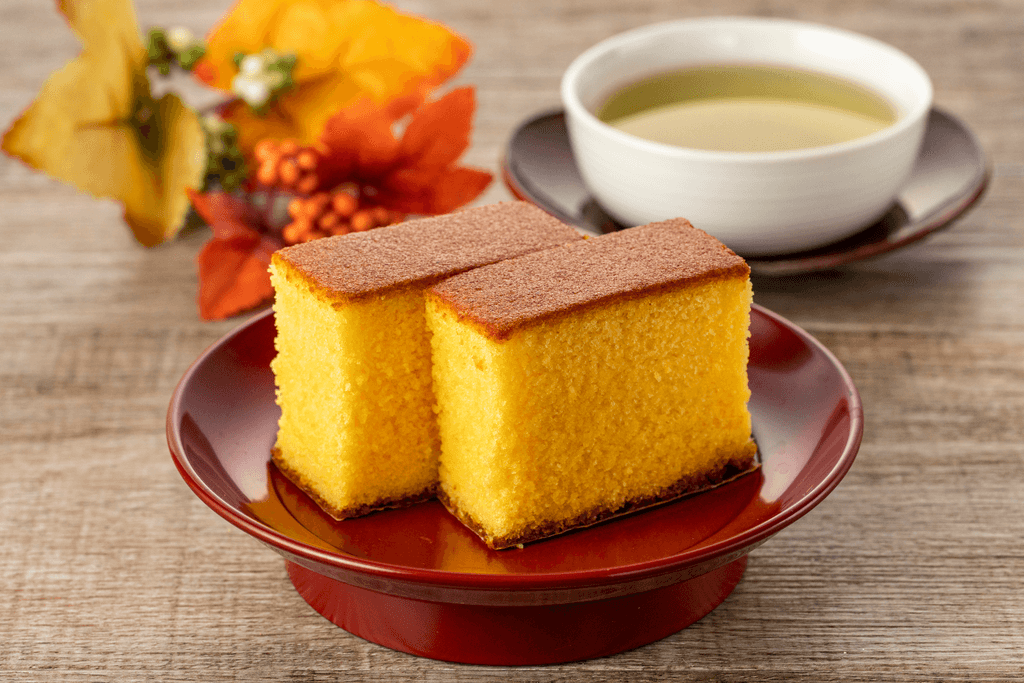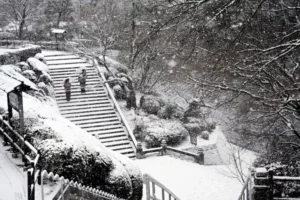Castella cake has been in Japan since the 16th Century when Portuguese missionaries arrived in Nagasaki. The delectable sponge-like cake made its way to mainland Japan and flourished with exciting variations, flavors, and shapes. Castella, known as kasutera in Japanese (カステラ), was introduced by the Portuguese on the northwest coast of Kyushu island.
Missionary sailors brought the cakes with them as they could be stored for an extended time. But, the cakes were not for the crew to eat. Instead, the luxurious cakes were gifted to the locals as a means of a peace offering. The cake was known as Pão de Lo in Portugal but was introduced to the Japanese as “Pão de Castela,” meaning “bread from Castille.”
During Japan’s ban on foreign trade, only the Dutch, Chinese, and Portuguese were allowed to trade with Nagasaki. Through this time, Castella remained popular and was even popular amongst the Tokugawa shogunate (the military government of Japan during the Edo period from (1603 to 1868).
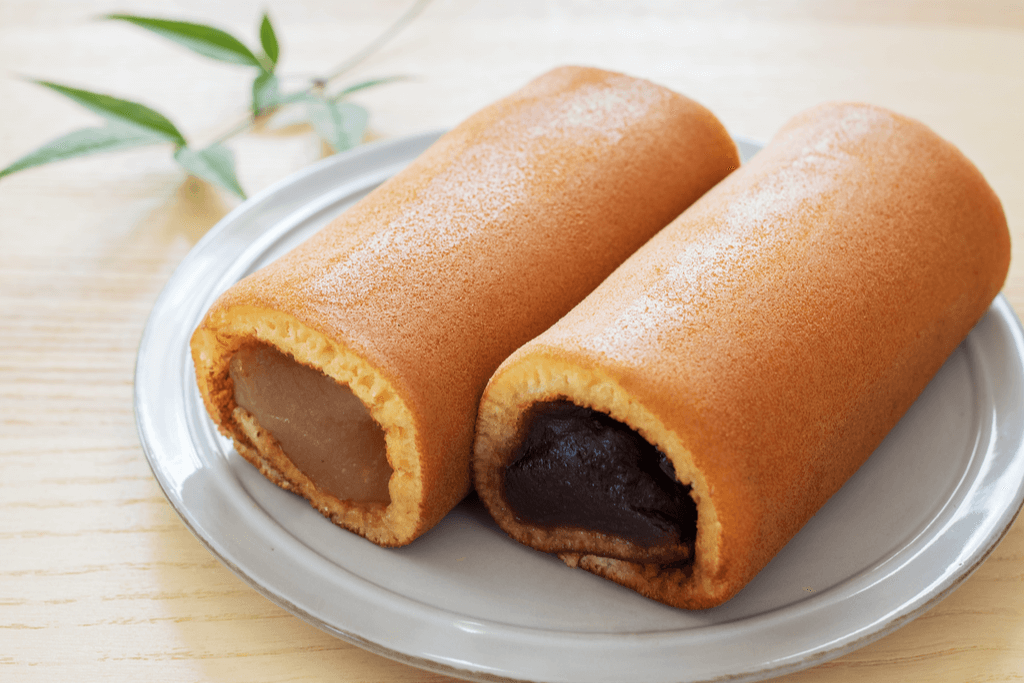
Although castella cakes have undergone many changes since their introduction to Japan, they have relatively maintained their primary ingredients. Flour, sugar, and eggs. The smooth, fluffy, and moist cakes were traditionally baked in a coal kiln, which allowed the distinctive castella aesthetic to be achieved.
Castella cakes have a distinctive look of a smooth, wrinkle-free, golden brown top. Another unique feature of the traditional castella baking method is the slightly crunchy bottom layer. The crunch comes from finely ground brown sugar that sinks to the bottom of the batter during the baking process.
Table of Contents
ToggleAre castella cakes the same as sponge cakes?
Often Japanese castella cakes are similar to sponge cakes. However, the castella cake is arguably superior due to precise Japanese baking methods and years of perfecting the recipe. With years of perfecting the cake, different varieties and flavors have been crafted. Some even vary through the prefectures of Japan.
Want to experience even more traditional Japanese sweet treats Check out Sakuraco! Sakuraco sends traditional Japanese tea, sweets, and snacks, right to your door every month, so you can have a relaxing snack time at home!
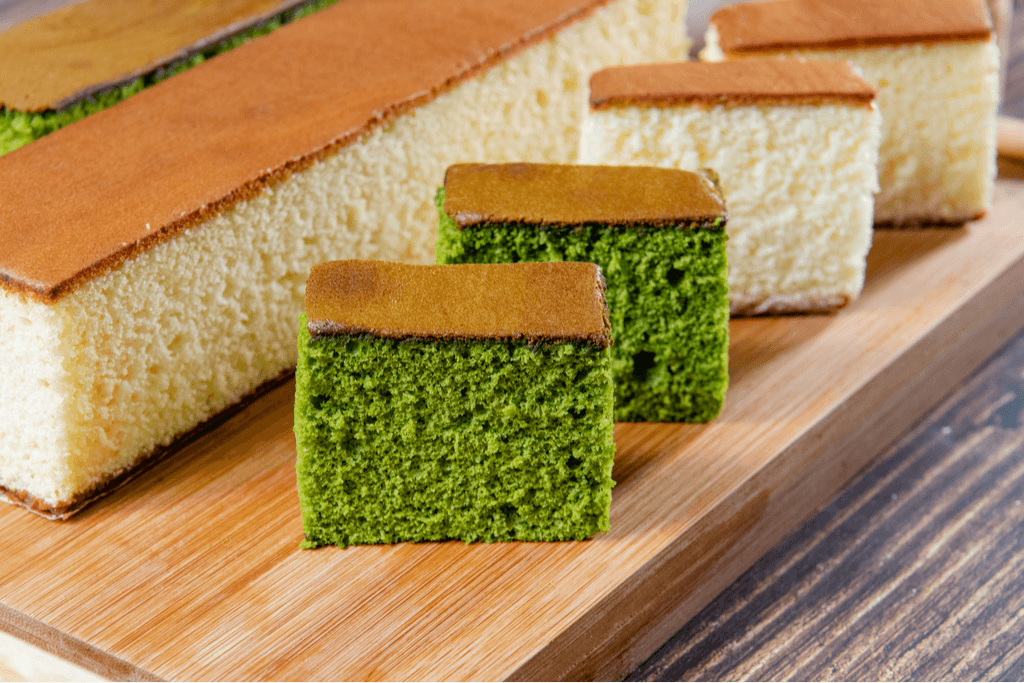
Castella cake varieties
Castella cakes are made with a simple three-ingredient list, but, over time, more flavors become popular. Varieties like green tea, matcha, brown sugar, and honey were more widely available across Japan. Brands began creating their own takes on the cake, such as the Hollander Cake. This cake adds cocoa to the traditional castella dough and then topped with walnuts and raisins.
Prefectural castella varieties
As the delicate and delightful cake made its way across Japan, different prefectures began to add their twist to the cake base. Using locally sourced and grown fresh ingredients added an exciting flavor that created a new delicacy for the area.
For example, Okinawa has an abundance of pineapple. Because of this, it influenced pineapple to be added to castella cakes. Aomori in the Tōhoku region is well known for its strawberries. This means you can find astonishing, delightful strawberries and sweet whipped cream castella cakes!
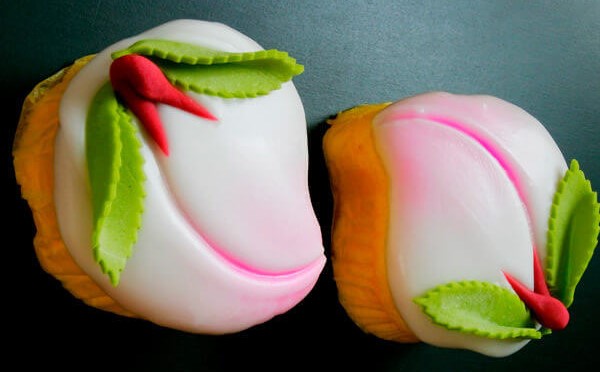
In Nagasaki, one of the more uniquely local sweets is peach castella. Peaches are often associated with being a good luck charm, representing long life in China. Because of the influence of China, the Nagasaki region incorporated the good luck charm into local culture.
The peach castella keep the same base flavor as the castella cake but resemble the shape of a peach with a unique peach-inspired sugar coating. However, this specialty cake can only be bought during springtime for Hinamatsuri – Japan’s Girls Festival, held on March 3 every year.
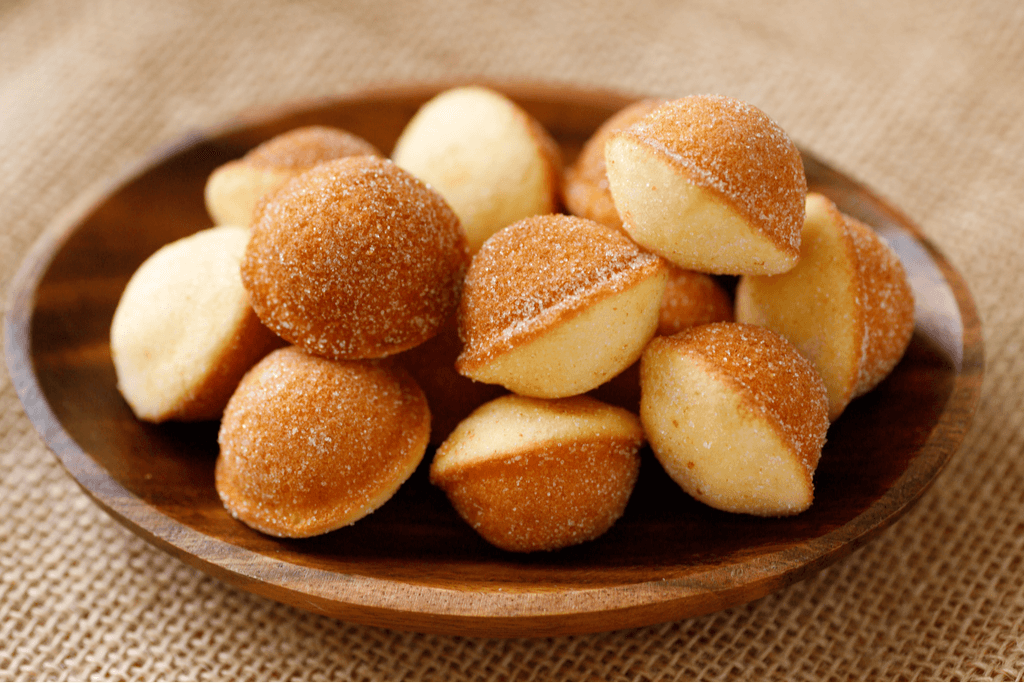
Baby castella cake
Over time the varieties of castella did not just stop at flavor; they changed shape too. In the Taisho era (1912 to 1926) Baby castella cakes were created at a food market stall. Still to this day baby castella cakes can be bought at Japanese matsuri (festivals) as they are an easy-to-make sweet treat. Just pour the dough into a particular baking machine, close the baking machine lid and bake. The sweet-smelling dough filling the air draws crowds to perfect bite-size cakes.
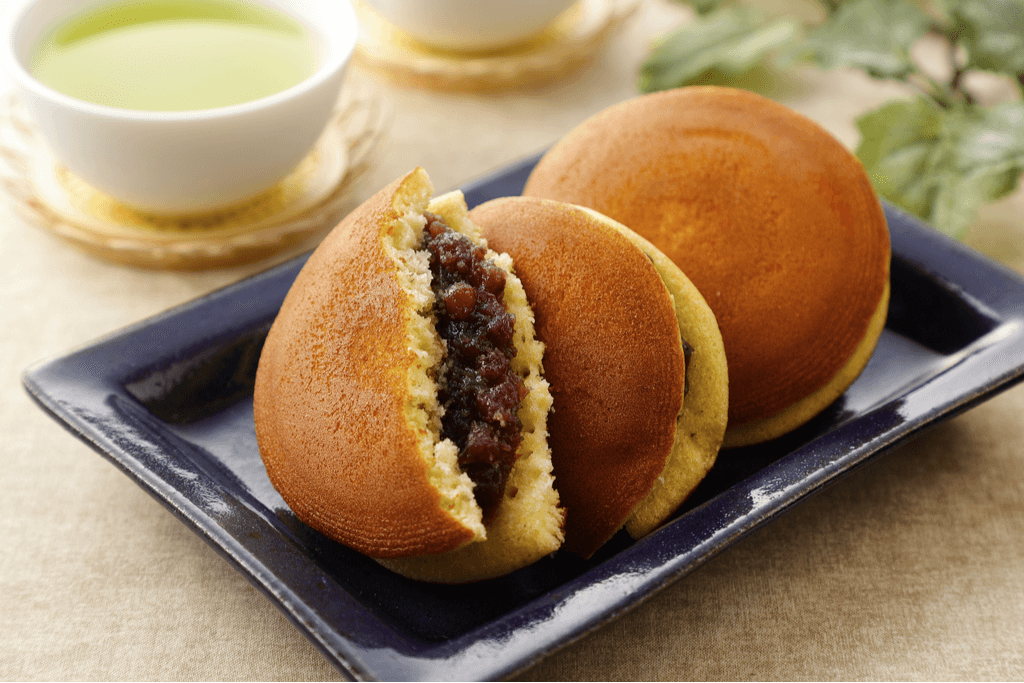
Dorayaki, siberia and kasumaki
Dorayaki, Siberia, and kasumaki are three types of Japanese wagashi (traditional Japanese confectionery). These snacks use the recipe of castella cakes and create a new exciting snack. For dorayaki, the castella base mix appears to be used more like a pancake batter. Two castella pancakes are used as the outer sandwich layer, with a sweet adzuki bean paste (red bean paste) in the middle. Invented in 1914 in Tokyo, the sweet treat has become a household snack enjoyed with green tea.
Siberia cakes were popular in the 1920s and consisted of a filling of yokan (sweet bean jelly) in a castella cake. This type of cake is similar to an added extra filling layer of flavor in the middle of a castella cake.
Kasumaki is a confectionery unique to the Tsushima region in Japan. The cake consists of red bean paste wrapped in thick castella cake. During the Edo period, the ruling family of Tsushima welcomed the feudal lord returning from a year of residence in the capital by serving this treat filled with mochi rice cake, a luxury at the time. Today, the traditional sweet is popular among residents and tourists.
Castella cakes now come in many shapes, sizes, and flavors. Because of the simple and delicious taste, traditional castella cakes remain one of Japan’s most loved sweet treats.
Have you tried castella before? Which flavor and style would you like to try? Let us know in the comments below!

